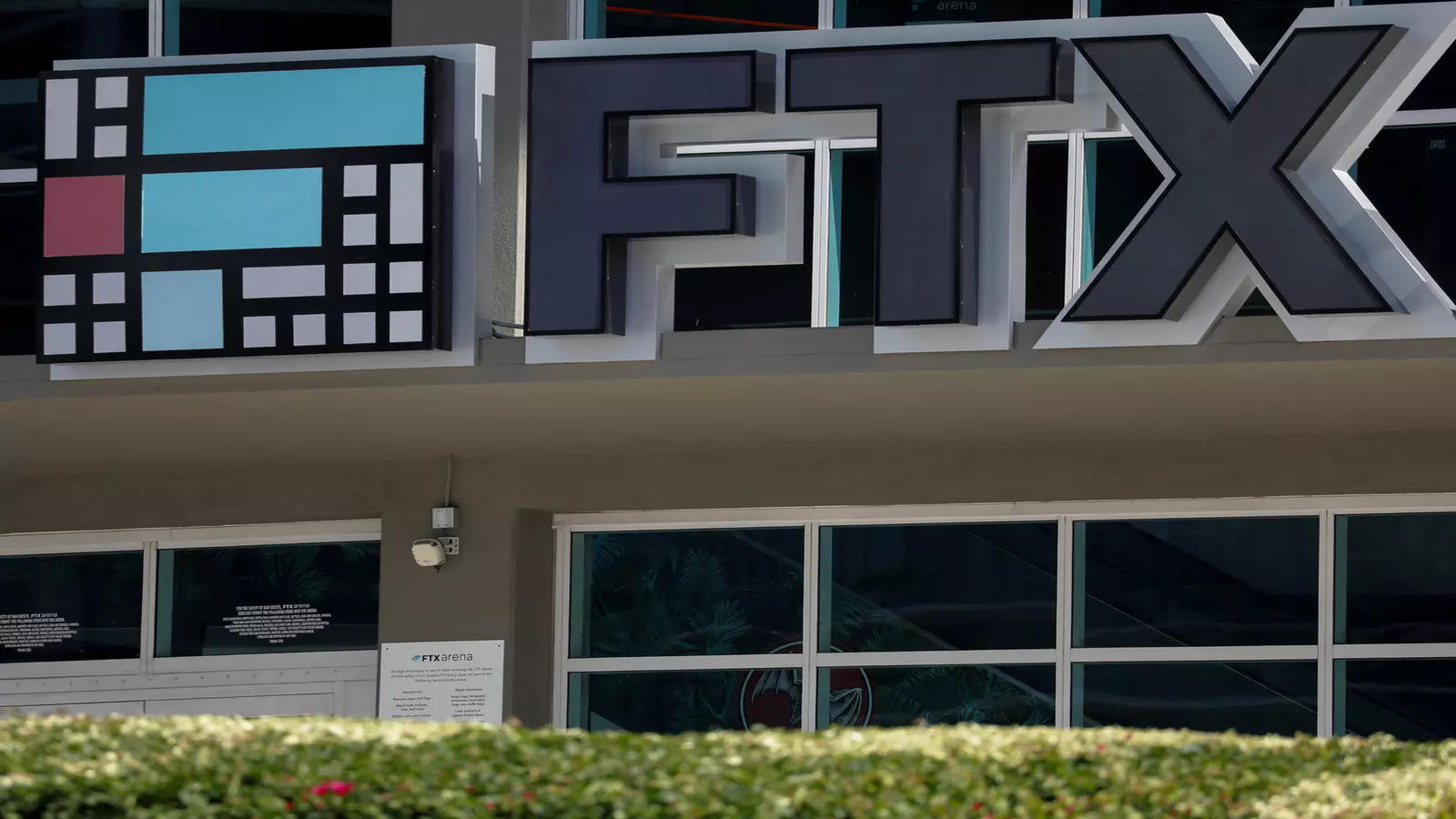Hello and welcome to the latest edition of the FT Cryptofinance newsletter. This week, we’re talking about The Bahamas, once everyone’s favourite “crypto hub.”
If you’re a crypto business in the US, there’s a high chance this year your management team has discussed leaving for a country less hostile to what you’re trying to do.
Rightly or wrongly, American authorities have clearly decided they don’t like many of the industry’s practices. If you’re running one of these businesses, it’s quite a comedown from the days when the doors were held open and you were seen as innovative and experimental. Now you have to prove why you’re not openly flouting federal laws.
Luckily there are still some places that welcome you. Last week Coinbase received a licence in Bermuda and this week Gemini, the exchange run by the Winklevoss twins, announced it would launch a crypto derivatives market, open to users in many countries (but not China, the EU, UK, Japan and certainly not the US). Its location has yet to be revealed.
But even these friendly places may not stay quite as welcoming for long. Take The Bahamas, where FTX was based and hosted a blowout, no-expense-spared conference only a year ago (yes, really!) that now defines the peak of the crypto bubble.
It’s not a place that’s particularly welcoming to people wanting to ask about sources of wealth and regulatory standards, as I found back in November — but it’s difficult to dismiss the legacy Sam Bankman-Fried has left behind.
The FTX saga left a significant black spot on its ambition to become a hub for digital assets, so much so that regulators are rewriting their crypto laws for a fresh go around. On Tuesday the markets regulator began a consultation on rules that “strengthens financial and reporting requirements for digital asset businesses”.
Of particular note is a focus on “new regulatory frameworks”, including one crucial point: making sure service providers are able to return client assets and maintain procedures to ensure these assets are protected. Hindsight is a wonderful thing, isn’t it?
It’s something of an about-turn for The Bahamas, which was rushing to defend itself as FTX fell apart. Only six months ago Prime Minister Philip Davis said: “Based on the analysis and understanding of the FTX liquidity crisis to date, we have not identified any deficiencies in our regulatory framework that could have avoided this.”
I asked the PM’s office this week why new legislation was necessary, given such a strong defence of his country’s laws. I didn’t receive a response.
In fact the island had already started to look again at its rules. The Securities Commission of The Bahamas said it began reviewing its legislation in April 2022, months before FTX’s collapse. It has also engaged law firm Hogan Lovells — which is also lobbying for Binance US’s interests in Washington DC — to begin drafting new laws, although it didn’t say when the work began. The SCB did not respond to a request for comment.
A person familiar with Bahamian regulations told me via email that “as the digital assets space evolved and new risks became apparent, particularly following the crypto winter of 2022, it became necessary to update the legislative framework”, adding it “is not unusual for regulation to be reactive to emerging threats”.
That’s true; but it’s also a reminder that if the choice is between welcoming crypto companies and toughening your standards to save face internationally, there comes a point when even the most “progressive” regulators raises the barrier.
What’s your take on The Bahamas’ fresh approach to crypto rules? As always, email me at [email protected]. Join me and FT colleagues at the FT’s Crypto and Digital Assets Summit on May 9-10 as we discuss where the digital assets market is heading. Also appearing at the event will be the UK’s economic secretary to the Treasury Andrew Griffith and Hester Peirce of the US Securities and Exchange Commission. Register for your pass here.
From one “crypto hub” to another: I wrote about my home Gibraltar being forced into the spotlight by the failure of Globix, a cryptocurrency trader incorporated in the British Virgin Islands but whose investors were mostly from the British Overseas Territory. I revealed that liquidators are searching for $43mn in missing funds, and at least one sitting member of Gibraltar’s parliament was an investor. Read my scoop here.
On Thursday the UK said it would review the way it collected taxes on trades in decentralised finance, which usually involves lending and staking of crypto assets. The consultation follows a sweeping new regulatory regime proposed by the UK earlier this year and is another sign of the government’s will to turn the UK into a crypto hub.
Binance US — the American arm of offshore giant Binance — abandoned its proposed $1bn acquisition of assets belonging to Voyager Digital, a crypto lender that went bankrupt last year. The exchange tried for months to convince regulators to give the deal the green light, including the Committee on Foreign Investment in the US, which was reviewing the deal for potential security risks. In the end, Binance US gave up, blaming . . . you guessed it, a “hostile and uncertain regulatory climate in the United States”.
A small windfall for FTX: the bankrupt exchange has agreed to sell its futures and clearing business LedgerX LLC to stock and derivatives exchange MIAX for $50mn. One takeaway from this: LedgerX was fully US regulated, with a licence from the Commodity Futures Trading Commission, making it more viable than other parts of the former Bankman-Fried empire. John Ray III, who took over as FTX chief, said the deal was an “example of our continuing efforts to monetise assets to deliver recoveries to stakeholders”.
A Jack Dorsey-backed non-profit called the Bitcoin Legal Defense Fund (BLDF) is co-ordinating the defence of bitcoin developers targeted in lawsuits by Craig Wright, who has claimed — without proof — to be the identity behind bitcoin’s pseudonymous creator Satoshi Nakamoto. You can read all about the case via the BLDF website here.
This year Coinbase received a Wells Notice from the Securities and Exchange Commission, America’s chief financial markets watchdog. These notices are uncomfortable because they inform a company that an enforcement action is probably coming its way.
Correspondence is also usually kept private but Coinbase has opted to fight it out in public. This week it published its response, laying out why it thought the regulator is wrong. Coinbase’s chief legal officer Paul Grewal sums it up as:
“Coinbase is the same company that we were when the SEC allowed us to become public two years ago . . . we didn’t list securities then, and we still don’t. We’d like to in the future, but the SEC has still not complied with the law by providing companies like Coinbase with a way to register to be able to do that.”
Global regulators have long worried that stablecoins could grow to a size where they pose a considerable risk to financial stability. That makes perfect sense of course; but right now the stablecoin market is going in the other direction.
According to numbers provided by data analytics platform CCData, the total circulating value of stablecoins has been declining for more than a year. In April, the total stablecoin market cap fell more than 1 per cent to $131bn, its lowest point since September 2021.
And while the market shrinks, Tether continues to tighten its grip. There are currently more than $80bn tethers in circulation, up from $66bn at the start of the year.
In contrast Circle’s USDC, long considered Tether’s chief rival, has done nothing but shrink (and briefly de-peg during a time of crisis). At the time of writing there are just $30bn USDC tokens in circulation, a far cry from the $55bn flowing through the market last summer.
Cryptofinance is edited by Philip Stafford. Please send any thoughts and feedback to [email protected].
The Bahamas, FTX and the limits of offshore crypto markets


